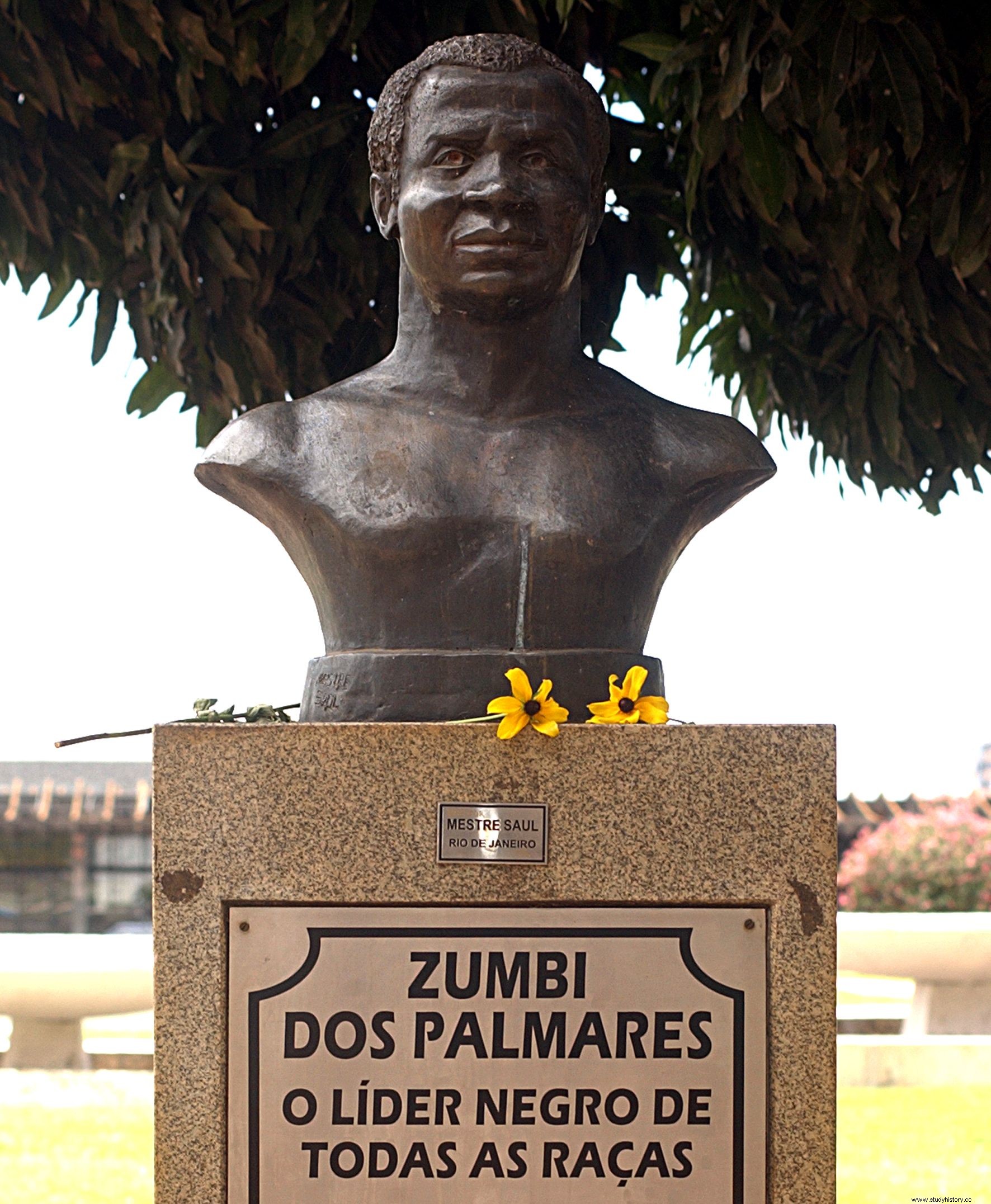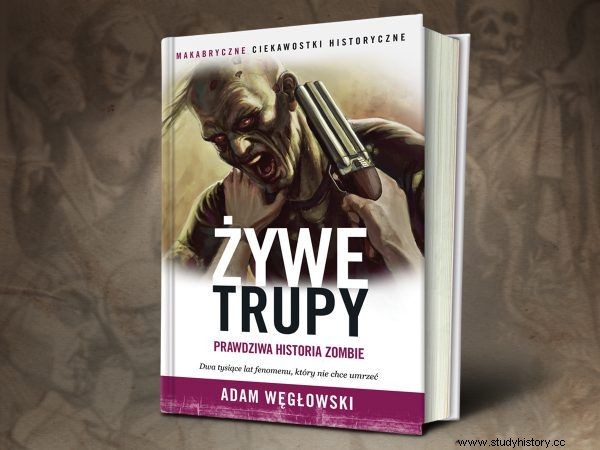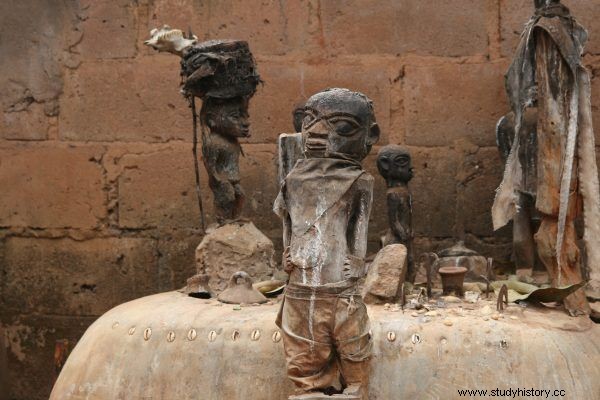Zombies did not originate in Hollywood or even in America. And they are by no means a product of pop culture. Where, then, was this phenomenon born?
The belief in zombie-like creatures came to the New World with slaves from Africa . Determining where exactly from is not easy. The slaves came from different parts of Africa and were mixed up on the spot.
Anthropologists usually point to four beliefs from the Congo Basin from which belief in the living dead may be derived. The word "Nzambi" , has two meanings there. It can define a creator, but also a dead man who has superhuman powers. "Nsumbi "Is in turn a demon or a devil. "Mvumbi" finally it means the soul or the invisible man.
There is also a "zumbi" or fetish, amulet . And also ... the leader of the rebel slaves, who in the 17th century managed to create in Brazil a free state the size of today's Czech Republic. Although Zumbi was executed in 1695 and his body desecrated (severed genitals were thrust into his mouth), his name became the terror of the colonizers.

A bust of the Brazilian hero of the slave-colonialist battles, Zumbi, located in Brasilia (photo:Elza Fiúza / ABr, license CC BY 3.0 this year).
Beings with names and functions reminiscent of zombies were believed not only in Congo. From today's Angola come "nvumbi", bodies without soul . In contrast, in the language of the Mitsogho tribe of Gabon, the word "ndzumbi" was used to describe a corpse.
Zombies as the terror of children
There is, however, an even closer counterpart to a zombie in Africa. They are monsters "zanbibi", night ghouls of the Fon people of Benin , that is, the former Dahomey. The tradition of scaring children with them has survived to this day.
Dahomey seems to be the birthplace of zombies also because this is where most of the slaves sold overseas came from. The power of the entire state was built on the export of live goods no wonder the area was called Slave's Coast.
Another factor points to the origin of the zombie phenomenon in Dahomey - religion. In the Caribbean, especially in Haiti and Guadeloupe, beliefs typical of the Fon people dominate. In the process of Christianization, they were only cosmetically enriched with Christian iconography. As Adam Węgłowski writes in our new book, "The Walking Dead. The real zombie story ”:
The cross has become a symbol of the intersection of worlds. They knew baptism from the African tradition of mystical immersion in water. Likewise, the One God - (...) Bondye. The saints served as a visualization of the ancient deities (for example, Saint Patrick is the creator of the cosmos called Damballah; (...) Jesus himself is the god of mercy Oxala, etc.).

It was from here that a large part of the Caribbean slaves came from. View of the city of Benin in the mid-17th century. A print from the book "Description de l'Afrique" by D. O. Dapper, published in Amsterdam in 1686 (source:public domain).
The Nowy Świat is filled with cults linking Christian, African and Indian traditions . In Haiti they are called water (not to be confused with voodoo which is not a religion but only black magic). This word means "spirit" or "divine being" in the Phonian language. As Adam Węgłowski notes: The belief in the existence of zombies is not part of the religion of water, but it would not be possible without the voodoo culture and philosophy.
Dark ladders and trains full of zombies
In Benin, vodu is a religion not only officially recognized by the state, but also permeating the life of the whole society and mixing with other cults - we read in the book "The Living Dead. The real zombie story ”. Contrary to Haiti, voodoo beliefs do not even hide behind images of Christian saints and symbols.

The article is based on the book by Adam Węgłowski entitled "Żywe trupy. The real zombie story ”. It is the latest publication released under the brand of "Ciekawostek historycznych". Click to buy it 35% cheaper!
Secret vanguard organizations exercise informal judicial power . Their policemen, Zangbeto, look - according to Adam Węgłowski's description - like haystacks, inside which a man is hidden. Despite their mulch appearance, they enjoy great respect.
In neighboring Nigeria, in turn, the masked Egungun is held in high esteem. These holy and untouchable "living dead" they appear to convey the will of the dead to the living. And they are very dangerous.
This article has more than one page. Please select another one below to continue reading.Attention! You are not on the first page of the article. If you want to read from the beginning click here.
It is widely believed throughout West Africa that people who are not buried properly or who die as a result of dark magic can be revived and forced to work in a remote place . A similar theme also appears in South African tales of "witch trains." This means of transport transports zombies to work in the mines - usually victims of shamans.
It is worth quoting here a telling statement by a priest from Benin, an immigrant from Nigeria. When asked if he knew anything about zombification, he replied: Of course. We made it up and our ancestors took it with them to Haiti .

Benin water altar. Is that where the zombies come from in that African country? (photo:Dominik Schwarz, license CC BY-SA 3.0).
Children of Guinea
Wodu, transferred to the Caribbean, retained another interesting relationship with Africa:the belief that souls after death go into the water abyss of life called Guinea . It is no coincidence that the land from which many slaves came is the same name. Many of the watchers refer to themselves as "children of Guinea" and not "vodists".
The children of Guinea do not count on the resurrection of the body, but believe that man can rise from the grave. To prevent this from happening, subject the dead to special rituals separating the soul from the body . But you have to be careful with that. As Adam Węgłowski writes: a living body, from which the soul (through oversight or on purpose) has been separated, can be taken over - like an empty vessel - by a sorcerer. This is how a zombie is made.

The article is based on the book by Adam Węgłowski entitled "Żywe trupy. The real zombie story ”. It is the latest publication released under the brand of "Ciekawostek historycznych". Click to buy it 40% cheaper!
Perhaps these beliefs were referred to by the name of Jean Zombi, a sinister and red-haired mulatto from Haitian capital Port-au-Prince. During the war with the French colonizers in 1804, by ruthlessly murdering white people, he gained the fame of a real butcher. To this day, his figure is an important part of the local tradition and faith.
French heretics and zombie countess
The origin of the word water was once tried to be associated with the medieval Christian Waldensian heretics, meaning "vaudois" in French. Perhaps there is some truth to this - For the French, the exploits of slaves resembled heretical practices . At the same time, Caribbean sorcerers call their activities very similarly. The term was easily remembered by both parties.

The popularity of the zombie phenomenon began with one book, thanks to which it was initially associated with… sexuality. On the left the cover of the Blessebois novel, on the right Tor Jonsson as a zombie with his victim on the set of the cult movie "Plan 9 from Outer Space" (source:public domain).
However, the French contribution to the zombie phenomenon is much greater. In 1697, the Frenchman Pierre-Cormeile Blessebois, sentenced to exile to Guadeloupe "Casanova of the 17th century", published the book "Zombie of Grand Perou, or Countess de Cocagne".
Today, no one would be interested in Blessebois's graphic arts, if not for a small detail - the work features, for the first time in the history of literature, the word zombie! "The Zombies of Grand Perou ..." is a largely autobiographical story. As the narrator, Blessebois tells the story of the Countess de Cocagne, the silly mistress of the eponymous Marquis of Grand Perou. A woman who wants to marry the count at all costs decides to use magic.
Blessebois offers her help by proposing to turn her into a zombie, which is how the author of the book “The Living Dead. A true zombie story ", a kind of invisible ghost that the Marquis will be tormented in his guise until he promises to marry her.

According to one of the characters in Blessebois's novel, zombies were supposed to look like jellyfish - with snakes instead of hair (Caravaggio's painting, source:public domain).
However, the countess is fooled - the narrator did not give her any power! He only got a few people to pretend they didn't see her. However, Blessebois's persuasion was so successful that there were witnesses claiming that in Grand Perou zombies with "snakes instead of hair" and "body like a harpy" played dozens of times!
Meanwhile, the Countess liked playing with dark powers. Lying naked and waiting for Blessebois' promised visitation by evil spirits - "round zombies", she was used because the demons turned out to be local masters who unloaded their veins on her. And this is how the zombie theme entered the literature…
***
In an atmosphere of decadence radiating from France, zombies - formidable living dead - have hatched in the minds of black Antilles people. Especially in Haiti, the black magic of Europeans, in synthesis with the beliefs of the enslaved people brought from Africa, created monsters. Monsters that soon took over the film studios of the United States just across the sea. And whose story really is stranger than fiction…
Source:
The article is based on the book by Adam Węgłowski, "Żywe trupy. A real zombie story ”, published by“ CiekawostkiHistoryczne.pl ”.
